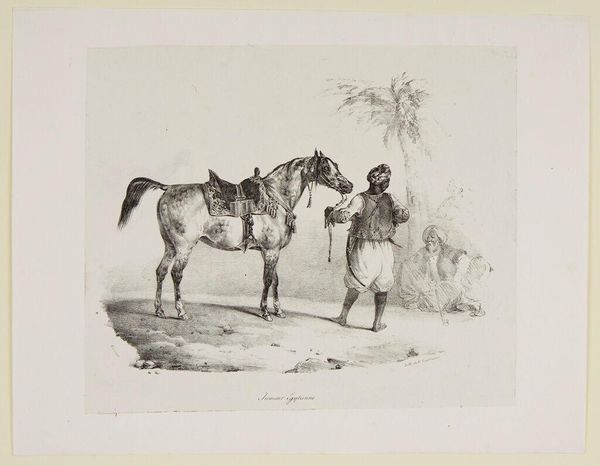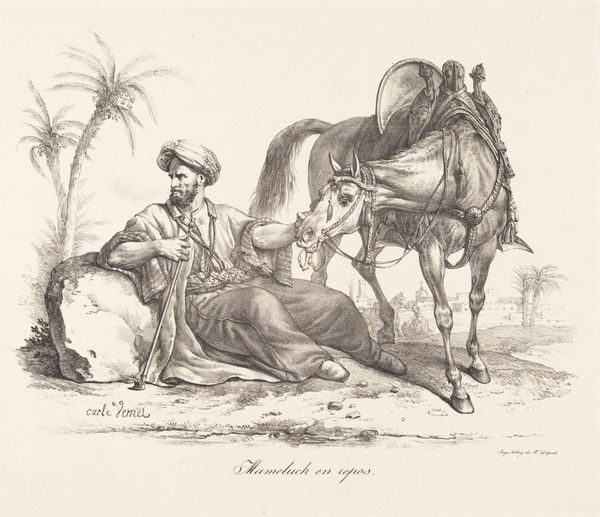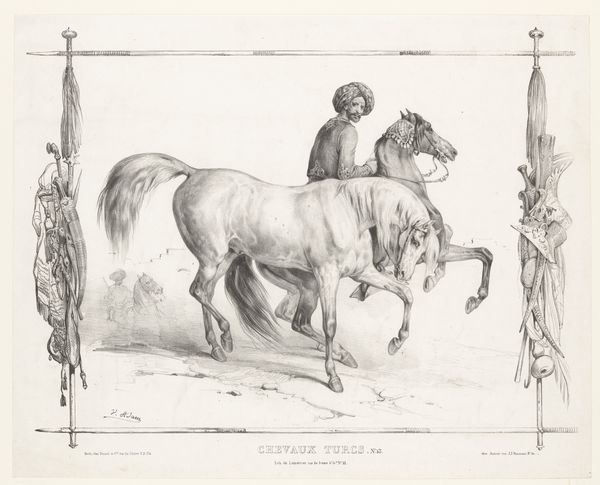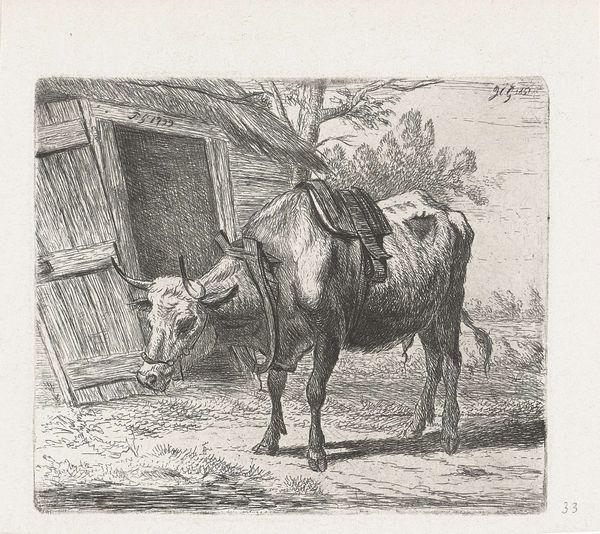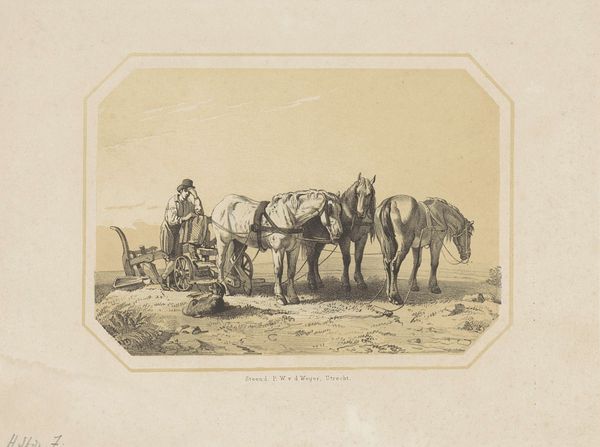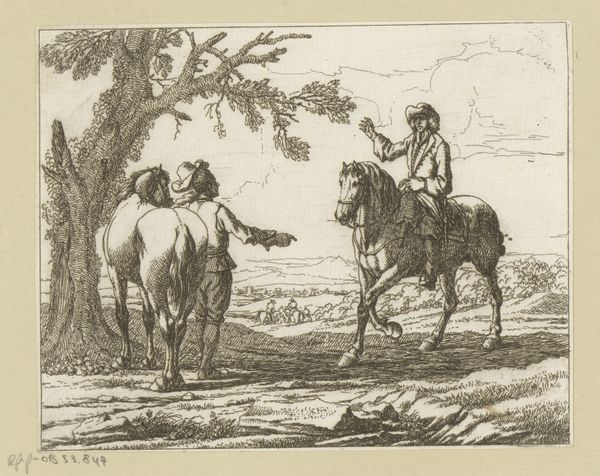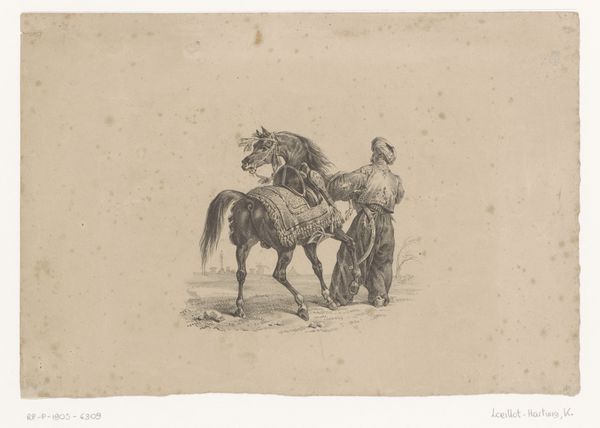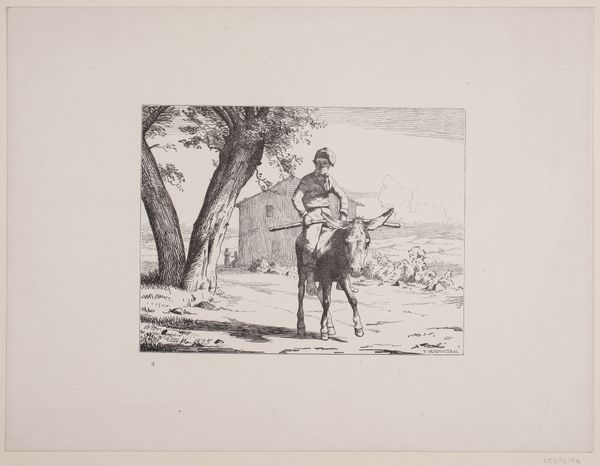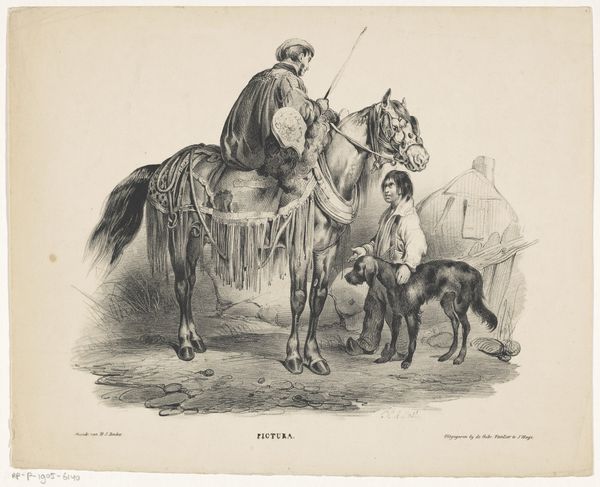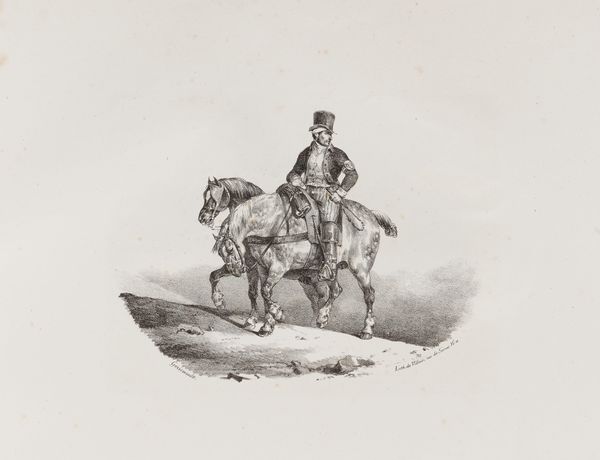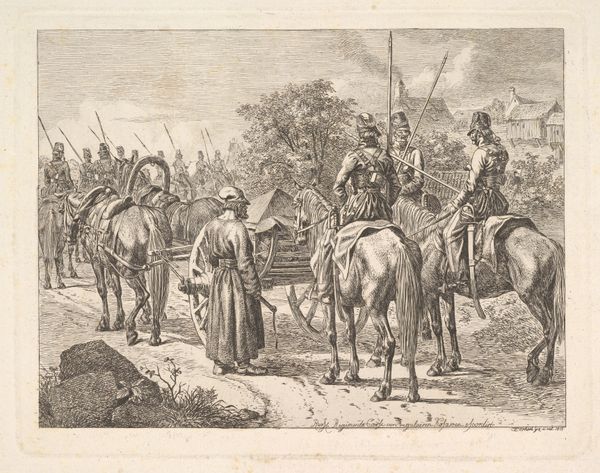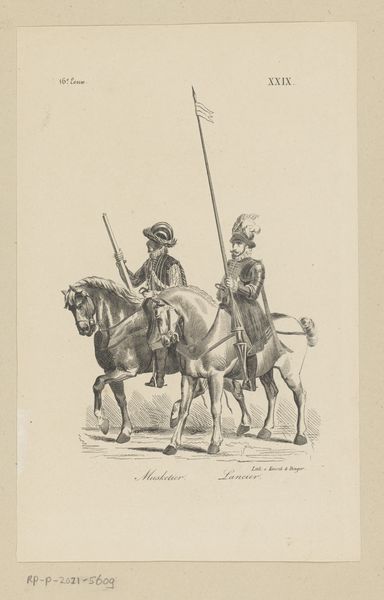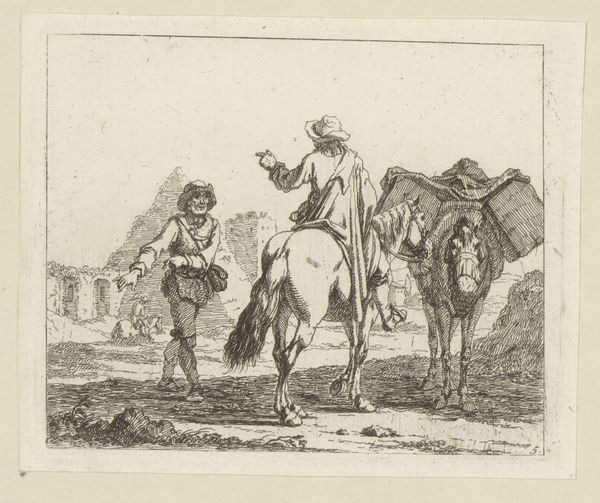
drawing, lithograph, print, pencil
#
drawing
#
narrative-art
#
lithograph
# print
#
pencil sketch
#
landscape
#
charcoal drawing
#
figuration
#
pencil drawing
#
romanticism
#
pencil
#
orientalism
#
genre-painting
Dimensions: 7 1/2 x 9 1/4 in. (19.05 x 23.5 cm) (image)
Copyright: Public Domain
Curator: Look at this evocative print by Théodore Géricault, titled "Jument Egyptienne," created around 1822. It's a lithograph, showcasing a horse and figures in what appears to be an Egyptian setting. Editor: My immediate impression is one of quiet stillness. The soft shading and the composition, with the horse prominently placed, lend a melancholic and serene feel. There's a delicate balance between the subjects portrayed here, though perhaps somewhat asymmetrical overall. Curator: Exactly! Géricault was deeply invested in portraying not just the image, but the social relationships at play here. This work aligns with the burgeoning interest in Orientalism during the Romantic era; a fascination projected upon foreign cultures and landscapes. I find myself thinking about how access to exotic imagery fuelled the presses as part of this proliferation of lithography, an affordable medium reshaping visual culture, widening access. Editor: I am particularly drawn to the almost photorealistic detail he captures in the horse's musculature and the texture of the saddle, a fine application of light and shadow—quite remarkable for a lithograph. It suggests a tension between naturalism and a Romantic sensibility, each seeking expression here, battling for dominance over how meaning gets formed in relation to its subjecthood. Curator: Considering its creation in the 1820s, we have to think about colonialism and its relationship to production: From whose labour was Géricault drawing? What specific dynamics of power and exchange would facilitate a French artist rendering his idealized views about a distant Egyptian context, so detached and uninformed? Editor: I see your point, though I would contend there is an undeniable formal appeal. This print seems to operate as both a representational document of early 19th-century exoticism as well as a showcase of aesthetic achievement using monochromatic tones. Géricault's strategic decisions and employment of graphic line allows the viewer a clear engagement here. Curator: It does push us to think critically, doesn't it? For me, considering the socio-political background against the materiality and distribution channels throws all its aesthetic properties into sharper focus. Editor: Indeed. A beautiful composition viewed from very distinct perspectives.
Comments
No comments
Be the first to comment and join the conversation on the ultimate creative platform.
